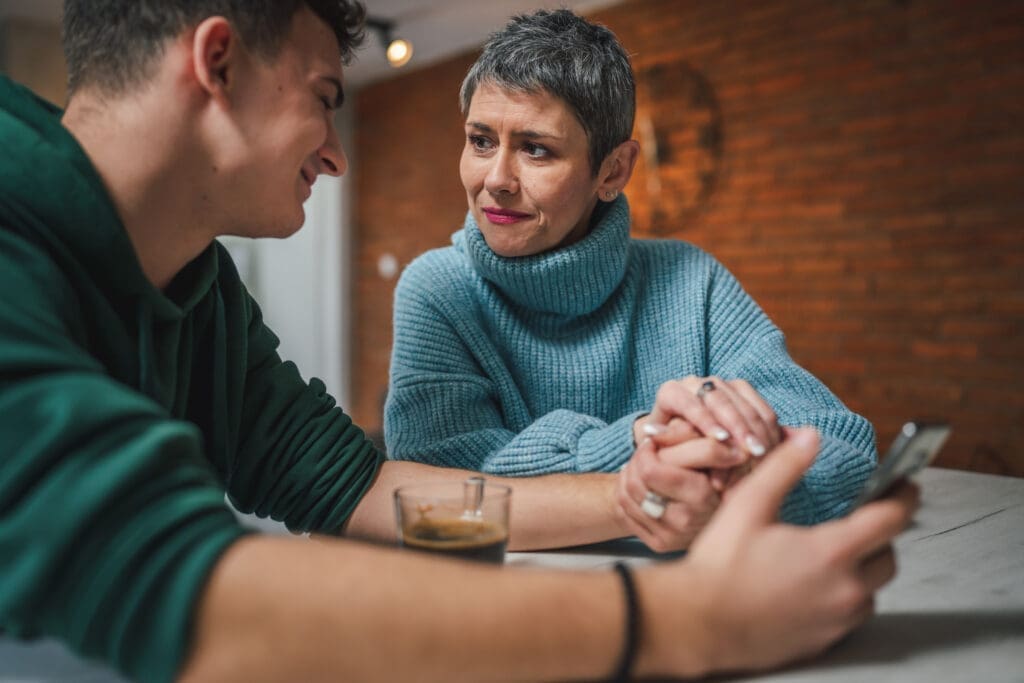Everyone has a relationship story — or three. Connecting with someone is a challenge and countless factors can play a role. One such factor is Borderline Personality Disorder (BPD). This is a mental health condition often characterized by impulsive behavior, unregulated emotions, and unstable moods. BPD also has a tendency to create relationship difficulties called “The BPD relationship cycle.”
The relationship vibe can swing suddenly from upbeat to a flurry of accusations and threats. While every relationship has its own variables, it can be quite useful to learn more about BPD cycles. With some awareness and preparation, these repeating highs and lows can be managed and navigated.
6 Stages of the BPD Relationship Cycle
Let’s dispel a major myth here. You can have a healthy and sustainable relationship with a person who has BPD. But again, it will require some understanding and self-education. For starters, it’s essential to know the potential six stages of a BPD cycle:
- Stage 1: After a very short time period, the relationship seems to be moving quickly. The partner with BPD may start to fixate on the other person.
- Stage 2: At this point, the BPD partner becomes easily triggered. They feel concerned that they are about to get dumped.
- Stage 3: Based on the fears from Stage 2, the BPD partner needs constant reassurance. They demand “proof” that they are loved.
- Stage 4: When needs are not being met, anxiety heightens for both partners. This can drive a wedge between them
- Stage 5: With friction escalating, it’s not unusual for the non-BPD partner to call things off here.
- Stage 6: The BPD partner has had their fears confirmed. They feel angry and may begin to act out in extreme ways.
It’s important to know that these stages can and often do happen. It’s even more important to know that you can manage rollercoaster love and make it work.
Coping Mechanisms For the Person Living With BPD
- Redirect Your Mind: If you feel something like fixation or self-doubt trying to take hold, distract yourself. Create a repertoire of behaviors that require you to directly focus elsewhere.
- Music As Balance: When dark thoughts or depressed feelings emerge, you can counteract them. Listen to music that provides a positive vibe and/or upbeat tempo. In case when your mind seems to be in overdrive, mellow music has been shown to offer balance.
- Grounding: This is a fundamental exercise for people with BPD. Cultivate ways to ground yourself in the present moment, e.g. breathing, meditation, and sensory practices aimed at identifying what see, hear, smell, etc.
- Ask For Help: Develop a support system that extends well beyond your partner. Let the people in your life know what you need.
- Get Appropriate Therapy: It’s important that you are in therapy for the long haul. People with BPD can get better if they have therapy that fosters accountability, emotional regulation skills and self responsibility.
Coping Mechanisms For the Loved Ones of Someone With BPD
If your partner has BPD, it is crucial that get comfortable with setting and enforcing boundaries. This involves:
- Preliminary Conversations: Talk in advance before laying down the ground rules. Calmly and carefully explain why you are doing this.
- Setting Boundaries: Slowly set and implement the boundaries. Do so with the intention of teaching your partner to better recognize your personal needs. When those boundaries are inevitably tested, stand firm. Do not let your partner — or anyone — cross them.
- No Free Passes: If your BPD partner does not respect your boundaries, you can’t “let it slide.” Without some kind of consequence, they may not take the boundaries seriously.
- Be Vigilant: People with BPD can be masters at avoiding responsibility. Don’t collude with habitual blaming and helplessness.
The BPD Relationship Cycle Is A Rough Ride-Do Not Go It Alone
Trauma counseling can be essential for any couple in any relationship. If one of you is struggling with BPD, it becomes downright necessary. Identifying triggers, setting boundaries, and more — it’s all much easier with professional guidance. Let’s connect and talk about it soon.





